Winter vs. Summer Humidity inside & out

I’ve noticed that the average humidity level outside seems to be comparable is record when monitoring off the National Weather Service regardless of month. I easily noticed my central AC unit pulls moisture from the air as it condensates and removed via the condensation line/pump in the Summer.
Stranglely enough, even less moisture remains in the inside air affording a high level of static electricity to build and become a problem. Yet, the ambient humidity levels outside are no different in record (what the National Wether Service reports) than in the Summer. So, the actual moisture level in my home is either actually lower in Winter than in Summer, or static electricity is in much larger supply (darn those little electrons) during the Winter months.
All I know is that its freaking dry inside my home and I dare not ever raise the thermostat above 65ºF during the day/weekend, and the usual 58-60ºF during the sleeping hours. Even when its raining outside in the upper 38’s and low-40’s its still dry as hell. Heck, my fingertips are starting to crack! This makes dexderity something of a joke.
How do all of you put up with such low indoor humidity levels? If I were not to run the heat in cold times the level of static electricity indoors is still higher than in the Summer months, even when its been raining for days. If the heat goes on, that level of humidity seems to tank. I can feel the dryness in my eyes, too.
I suppose for 2600 SqFt of 9′ ceiling volumes I’d need some serious humidifiers, but I am concerned about warm/cool (or hot/cold) spots leading to mold/mildew.
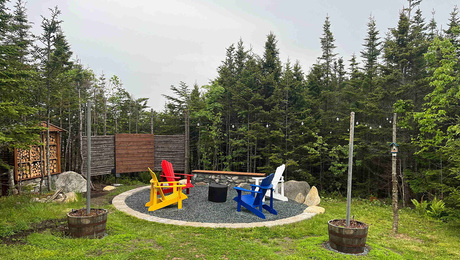
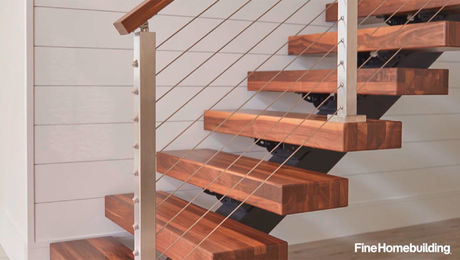
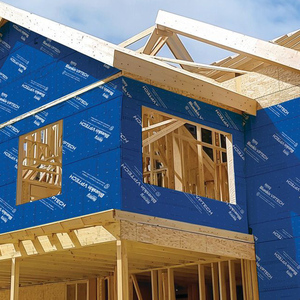
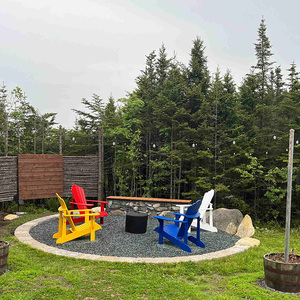
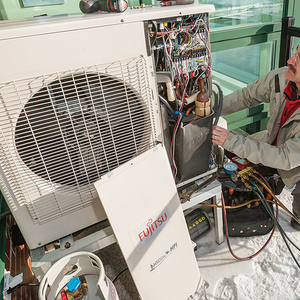
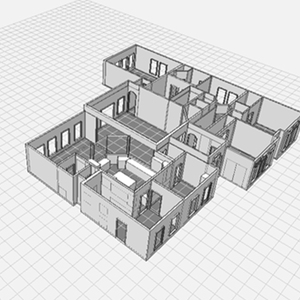













Replies
The problem is that there are a number of ways to measure humidity.
The weather reports list RELATIVE humidity, but if you look at a actual recorded data it shows dew point.
People and wood and some other things are sensitive to Relative humidity.
RH is the ratio of the amount of water vapor in the air divided by the maximum amount of water vapor that the air can hold for the GIVE TEMPATURE.
When the air is cooled until you reach 100% RH and water starts condensing out that is the Dew Point.
Here is the data for ATL.
If you go to the history (1/2 way down the column with the radar on it) you will see that the dewpoint for 12/15 was 28. On 8/15 the dewpoint was 73. A LOT more water in the air.
The next thing is that you need to look at is what happens when you warm or cool a "box" of air. Unless you cool it to the dewpoint the amount of water air does not change. However as you heat it the air can hold more water and thus the RH does down, and cooling it is the oposite.
psychrometric charts show what happens as you change temp (dry-bulb), but leave the amount of water (moisture content) constant.
http://www.taftan.com/thermodynamics/PSYCHART.HTMhttp://www.taftan.com/thermodynamics/PSYCHART.HTM
http://www.sp.uconn.edu/~mdarre/NE-127/NewFiles/psychrometric_inset.html
Bill, thanks for the explanation on what is being reported externally. How can I control this internally, where I am zapping my electronics to death? I remember last winter i started getting numb fingers because of the static discharges. That cannot be good for the nerves.
You either need to add humidity or decrease the amount of moisture that is leaving the house.Lots of moisture comes from breathing, plants, cooking, and bathing. Now much moisture that is depends on the number, of people, and lifestyle. In fact in new TIGHTLY build homes the amount of moisture can build up to excessive amounts. That is what the discussion about ventalation and heat recovery vent systems are about.In a leaky home the the warm, moist, condition air leaks out and it replaced by cold, dry air.So your options are to do what you can to reduce air leakage and/or to install a humdifier.Probably the easiest place to sealing an existing house is to go into the attic and sealling around any and all penitrations through the ceiling plane.
Generally, for an existing house, you install a humidifier. There are of course stand-alone "console" units (look charming in the living room) that you fill with a bucket every day or two, or, if you have a forced-air heating system, you can install an automatic unit on the air handler.We have an Aprilaire unit (can't remember the model) installed on our gas forced-air furnace, rigged so that it can operate independently of the burner. Normally these units are rigged so they can run only when the burner is on, and this can lead to too-dry air in spring/fall in a moderately well-insulated home.It's good to have a unit which (like our Aprilaire) has an outside temperature pickup. This drops the inside humidity when outside temps dip below about 20F, reducing the condensation on windows, etc.
If ignorance is bliss why aren't more people
happy?
Dan, thanks for that bit of information. I wasn't aware that centralized humidifiers even existed for residential HVAC systems. I grew up knowing the only means was either pot on stove of electric room humidifier. BTW, how does one measure absolute moisture levels inside their home? Relative humidity was explained in relation to dew point, but this says nothing about the actual amount of moisture one needs to know they have in order to know how much they need to add.
Its amazing that things like a centralized humidifier isn't even an french fry worth offering by builders (ok, track builders). I guess this mirrors the lack of offering the centralized electric air cleaner french fry, too. Hah! I'll need to work on finding a way to measure the absolute level of moisture in my home during winter/summer months so I know exactly how much I am turning into a prune.
Absolute humidity isn't usually measured. Instead you set the humidistat for 35-40% relative, assuming reasonably normal indoor temps (somewhere between 60 and 80, depending on your age and upbringing).Something like the Aprilaire 700 (which is basically what I have) is the most flexible unit to use (see if this link is any good): http://www.aprilaire.com/product.asp?ID=B92188FEF8164ED9BAF7797DB95F5ED6&categoryID=F16F78145781484A8A7C756B87F43AB3&catID=It contains a separate fan, so it only needs to be connected to one duct, where as the more common units (like the 600) need to be attached to both hot and cold ducts.In my case, because there was no room to tap into the hot duct, and because I wanted to run independent of the heat, the unit is fed hot water. Most of Aprilaire's units are speced to accept (though not generally require) hot water, while units from most other vendors are only speced for cold. Something to keep in mind.On this unit and most others maintenance is to replace the "media" panel once a year. The unit (like most) is rigged with a drain, so that most of the hard water crud goes down the drain. My unit drains into a "condensate pump", since there was no convenient drain I could reach by gravity.
If ignorance is bliss why aren't more people
happy?
Dan, I'm a little confused about that Model 700 and the picture they are showing on the webpage. First, I have one set of source vents (conduits) for both heating and cooling. Up until Thursday, I had given serious thought to having a mechanical company come in and ripping out the flex-duct and replacing it with spine rigid duct with the installation of both an electric air filtration unit and a central humidifer, but my employer just gave some good news.
In addition to laying off 1500 managers and +200 non-managers, my compensation just got cut 10% (about $6K). So, there goes Xmas, backup heating and electricity, etc., etc., etc. I'd like to extend my warm wishes to my employer (BellSouth) and hope the CEO's multi-million dollar annual bonus helps him survive the elements.
Off track but has to be said:
the CEO's multi-million dollar annual bonus helps him survive the elements.
These folks get bonuses for laying people off (reducing costs leads to a better bottom line) )just before Christmas (we don't want to surprise them after Christmas when they'll have the big bills coming in. So before is a lot better???)
Just once I'd like to see an executive refuse a bonus when his employees have taken layoffs or a big pay cut.
If ignorance is bliss why aren't more people
happy?
Holidays had nothing to do with their decision to surplus. For instance, 1st quarter last year they sent pink slips to 5,000 right after all of the holiday cheer. And its not so much the layoffs that impacts me as it is the loss of my workshift differential. That means an immediate $6K hit to my income plus a 3-fold increase in the amount of time I spend in-transit to/from the workplace. Can we say bloodpressure going up? Merry friggen Xmas, BellSouth.
Yeah, went through the lay-off route 5 years ago at 50. Luckily, had been in own private business before so had to dust off those skills and start small again since I was in whole new city environment where only a few knew me as a gov't advisor/energy regulator and not as home inspector/consultant/past contractor. Starting to get back to past income finally!
Yeah, by "cold" I meant the return duct, "hot" was the duct from the furnace. Should have been more specific.The fanless units (like the 600) attach on one duct or the other with a piece of flex duct between them that lets hot air flow through past the wet medium, powered by the furnace fan. The units with an internal fan attach to only one duct and use the internal fan to blow air past the medium.The fanless units are of course cheaper and probably more reliable, though a little less flexible in installation and use.
If ignorance is bliss why aren't more people
happy?
Re "absolute moisture", you can find charts (in ye olde CRC chemistry reference, if nowhere else) of the moisture capacity of air, vs temperature. 100% humidity is when the air is "saturated" (max capacity) at that temp, so you can use the capacity vs temperature to figure out what the humidity would be if you, say, raised a quantity of air at 40F and 50% RH to 70F.
If ignorance is bliss why aren't more people
happy?
One trick for dealing with static electricity and electronics:
Get one of those spray mist bottles that are used for misting house plants. Load it with a mixture of water and Downy Fabric Softener, in the 2:1 to 1:1 range. Spray this in the air, and on fabric surfaces, like furniture and carpet. The anti-static feature of the fabric softener is achieved by making it just slightly conductive, so it tends to bleed off charge. The water helps to raise humidity in the room, also tending to bleed off charge.
Before spending on a humidifier, I'd try the mist bottle with plain water, just to see if it solves the problem without creating other problems. It's an inexpensive way to test first.
-- J.S.
You can also buy commercial anti-static sprays.
If ignorance is bliss why aren't more people
happy?
This has been an interesting conversation so far. My question is how do I correctly size a humidifier for my house? So far after some hunting on the web, I can't really find anything that helps me determine this. I know one consideration would be how tight my house would be difficult to judge.
Let me know your thoughts.
TR
If you pick one of the standard size units that attaches to a forced-air furnace you don't really need to "size" it. Generally if (to pick a number) a 150K or less furnace can handle the house then the unit will be big enough -- the humidistat will cut the unit off when not needed. (There's also the consideration that you generally don't want to keep humidity quite so high in a really leaky house since condensation will tend to be worse.)The biggest caveat here is that in a semi-well-sealed house the furnace may not run enough in "transition" weather to keep the humidity up. This is where it's good to have a unit that can run without heat and which can control the furnace fan independently.
If ignorance is bliss why aren't more people
happy?
(Note that most folks recommend keeping indoor humidity in the 35-40% range during winter, except when temps drop low enough that window concensation becomes a problem. This humidity range is generally safe in terms of avoiding mildew problems, etc, while still being sufficiently high for person comfort and the "health" of furnishings.)
If ignorance is bliss why aren't more people
happy?
Nuke - can't help your problem, but I'm glad to know someone else keeps their home as cool as we do. People think we're crazy. Now, I know there are more nuts on this tree than I thought! The good news is we have little company, which suits us fine.
You could grease yourself up with vasoline, but that is messy and some would consider it kinky...(You could do your hands overnight with those flowered cotton gloves made specifically for this purpose.)
Hope you do get a real solution to your dilemma. I'm sure you'll find good advice here. Please don't take offence at the little fun I had at your expense!